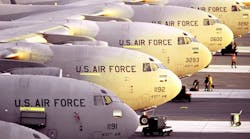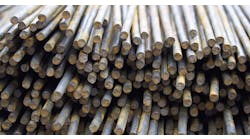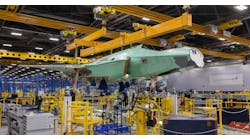Renton, Wash., plant launches work on wings for new single-aisle aircraft, on track for Q1 2017 delivery
Boeing Commercial Airplanes crews in Renton, Wash., started constructing the first 737 MAX during the final week of May — on schedule, the OEM emphasized. Assembly work began for the wings for the first flight-test 737 MAX, a jet that will be used to verify and document the design capabilities and to address any flaws that may be discovered in that process.
The 737 MAX will be the fourth generation of the single-aisle aircraft series, which Boeing describes as the best-selling commercial jet in history. The new version will make its debut in 2017, the 50th anniversary year for the 737 series.
The 737 MAX will be powered by twin CFM International LEAP-1B engines. The jet’s design includes Advanced Technology winglets, and other details that Boeing indicates will promote efficiency, reliability and passenger comfort.
For operators, the new aircraft is expected to provide 20% lower fuel consumption than the current version of the series, the Next-Generation 737, as well as the lowest operating costs in the single-aisle aircraft market.
Boeing has logged 2,720 orders for new 737 MAX jets, from 57 customers worldwide.
Wings are the first 737 components to be assembled in the Renton production process.
“Employees in Renton are the best in the world at building single-aisle airplanes and now this world-class team is building the future with the first 737 MAX,” stated Keith Leverkuhn, vice president and general manager for the new aircraft series. “Achieving this milestone on schedule is a testament to the success of the 737 and our integrated design and build team.”
According to Boeing, machine operators loaded 737 MAX wing skin panels and stringers into the new panel assembly line drills holes and installs fasteners in the upper and lower wing panels according to an automated process.
Mechanics also load the initial parts of the first 737 MAX spars into automated spar-assembly machines.
The unfinished skins, stringers and spars were machined by Boeing Fabrication Skin and Spar in Auburn and Fredrickson, Wash. The finished panels and spars will be combined to complete the wings.
“It’s really exciting to be starting something that you know is going to be in the future and that you are going to be building,” according to 737 mechanic David Dowell,. “I’m looking forward to it and future growth.”
The wings will be attached to the first 737 MAX fuselage later this year at the Renton Final Assembly plant’s new Central line. That line will allow the team to isolate the first 737 MAX build from the rest of production, in order to optimize the build process as the Renton factory continues to build other aircraft at a rate of 42 airplanes a month.








